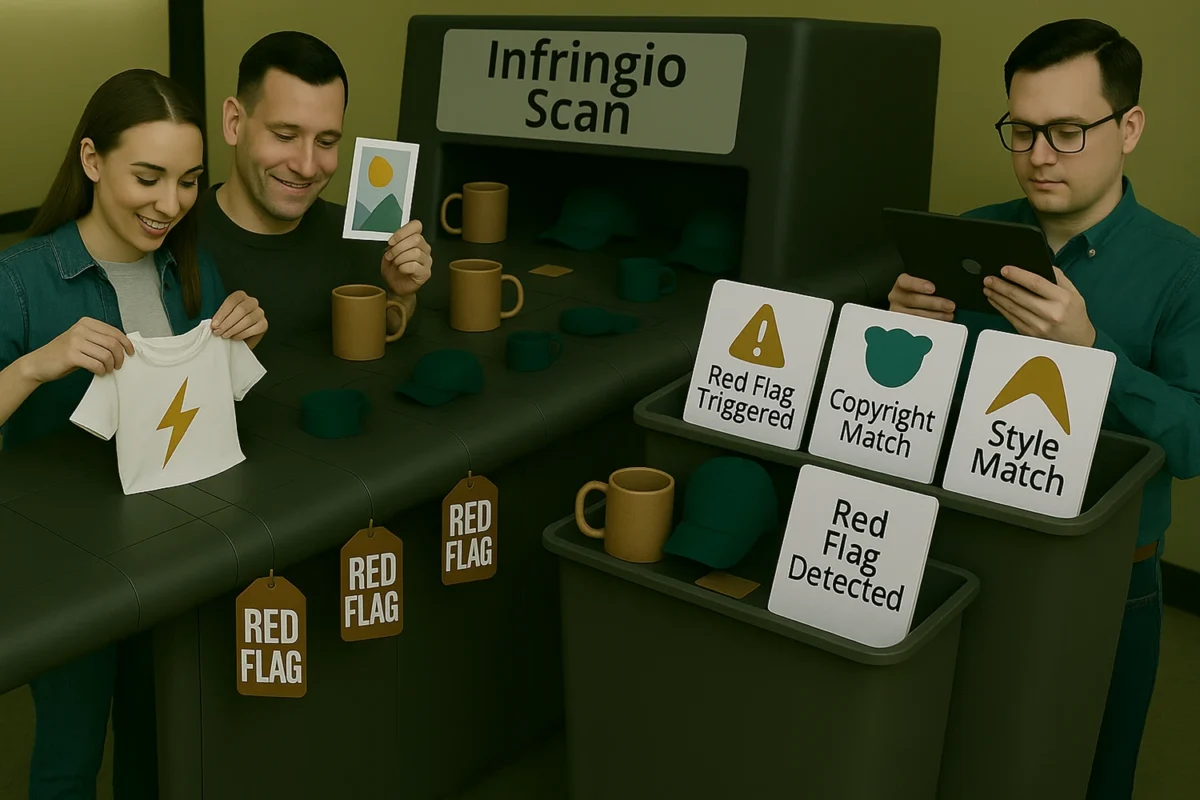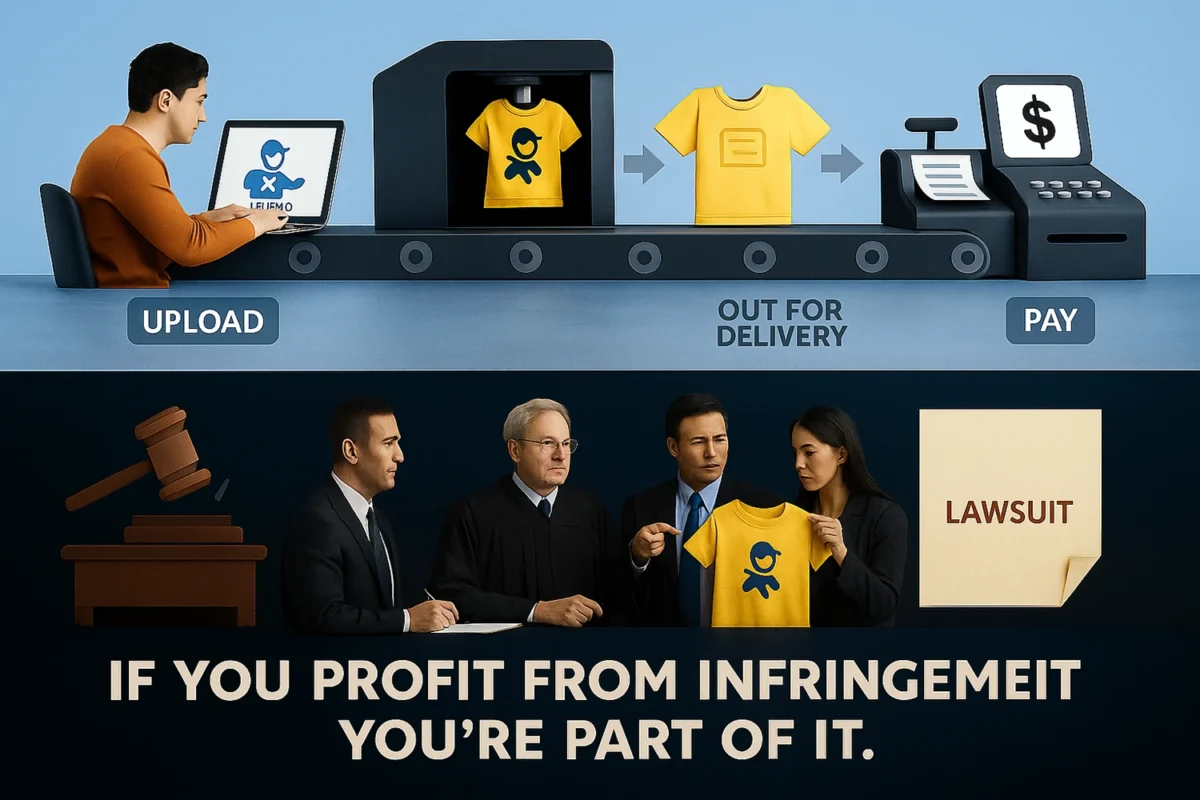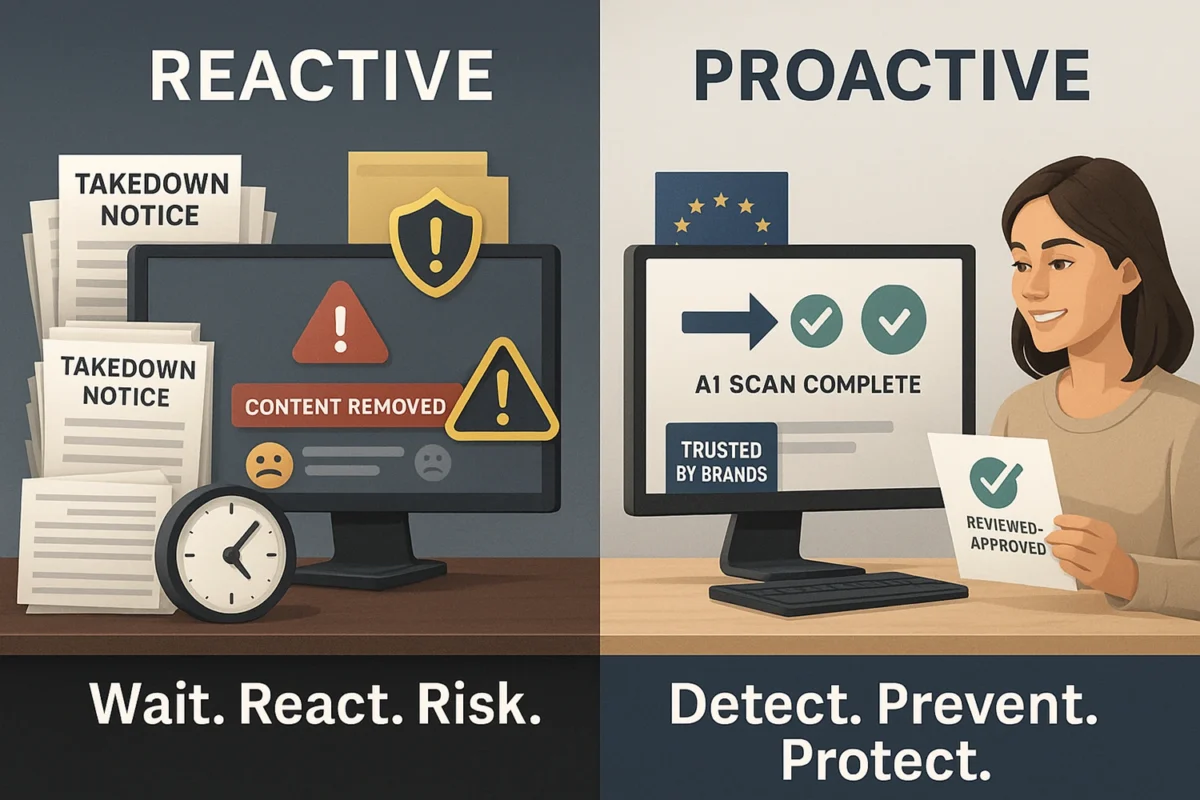User-Generated Content (UGC): The IP Minefield Every Platform Needs To Navigate
User-generated content (UGC) is the backbone of modern platforms – from marketplaces to meme hubs to print-on-demand (POD) stores.
But it’s also one of the biggest IP liability traps in today’s digital economy.
Because while UGC brings scale and engagement, it also brings legal exposure – especially when creators upload material they don’t own or don’t understand the rules around.
Here’s why platforms must treat UGC as a legal minefield – and how context-aware moderation tools like Infringio can help them navigate it safely.
1. UGC Platforms Have Limited Control – but Full Responsibility
Most platforms don’t create the content – they host it.
That’s why UGC platforms often argue:
“We’re just the tech. The users upload the stuff.”
But the law doesn’t always agree.
Courts increasingly find platforms responsible when they:
- Promote infringing content (e.g., algorithmic boosting)
- Profit from listings (e.g., sales commissions or ad revenue)
- Ignore red flags (see Red Flag Knowledge)
- Fail to implement basic takedown or detection systems
Even limited editorial control – like content curation, fulfillment, or merchandising – can turn passive platforms into active participants in infringement.
2. Common UGC Issues: From Memes to Etsy-Themed Knockoffs
UGC problems often fly under the radar because they don’t look like traditional infringement. But they’re everywhere:
- Memes using copyrighted characters, brand fonts, or celebrity faces
- “Fan-made” character art sold on t-shirts, mugs, and stickers
- Etsy-style copycat designs referencing popular quotes or styles without permission
- “Mashup” art blending two or more recognizable IPs (e.g., Star Wars + Pokémon)
These aren’t accidental uploads – they’re often intentional attempts to capitalize on IP value without licensing.
And if your platform fulfills, features, or profits from these listings, you share the liability.
3. Creator Negligence (or Willful Ignorance)
Many creators on UGC and POD platforms aren’t malicious – they’re just misinformed. But ignorance doesn’t protect your platform.
Common attitudes:
- “Everyone else is doing it.”
- “I changed it a bit, so it’s mine now.”
- “It’s a parody because it’s funny.”
- “I found it on Google – it must be free.”
- “It’s just for fun, not serious.”
Platforms that don’t educate, moderate, or prevent uploads like these often get caught in the legal crossfire – even if they didn’t upload anything themselves.
4. Infringio: Context-Aware IP Moderation at Scale
You can’t manually review every image, listing, or meme – but you can deploy smart tools that understand risk in context.
VISUA’s Infringio helps UGC platforms by:
- Scanning visual content pre-upload or in real-time
- Detecting IP issues based on stylistic and contextual clues (not just logos or keywords)
- Flagging suspicious content for triage or rejection
- Reducing false positives and negatives through nuanced, AI-driven analysis
- Empowering moderation teams with scalable, context-rich alerts
Whether it’s a Disney-style princess or a Hogwarts-themed parody, Infringio sees what traditional filters miss.
Conclusion: UGC Builds Communities – But Also Legal Risk
If your platform relies on user-generated content, you need to treat every upload like a potential liability.
Because while you may not control what users post, you’re still responsible for how you detect, respond to, and profit from that content.
The solution?
- Educate creators
- Build strong IP policies
- Enforce takedowns consistently
- Use context-aware tools like Infringio to scale safely
In the UGC era, IP compliance isn’t optional – it’s infrastructure.
Want to reduce your UGC platform’s IP exposure without frustrating your creators? Book a demo with VISUA today on how Infringio works.
Disclaimer: Not Legal Advice
This content is provided for informational purposes only and does not constitute legal or professional advice. The information reflects our understanding as of the date of publication and may not apply to every situation or jurisdiction. You should consult qualified legal counsel for advice tailored to your specific circumstances. Any actions taken based on this content are at your own risk. Neither VISUA nor its affiliates accept liability for any losses or damages arising from the use of this information.
Book A DemoRELATED
Redbubble, Teespring, and the Lessons of IP Enforcement Failures
Reading Time: 3 minutesPrint-on-demand (POD) platforms empower creators to design and sell products without holding inventory. But with that power…
BlogHow AI Is Changing the Game in IP Enforcement
Reading Time: 2 minutesIP enforcement used to be simple: But today’s infringement landscape – especially for POD and UGC-heavy platforms…
BlogThe Future of IP Compliance – Proactive vs. Reactive Models
Reading Time: 2 minutesFor years, most platforms treated IP compliance as a reactive function: But the market – and the…
Blog


